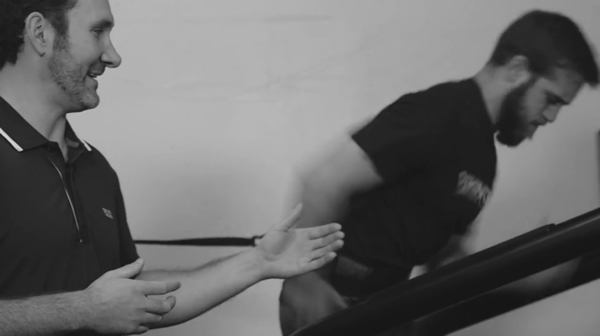
Over the past 17 years I’ve coached combat athletes, cheerleaders, housewives, executives, roller derby girls, ultimate frisbee players, and just about anyone else you can think of. I’ve seen what’s worked. And I’ve seen what doesn’t work. Today I want to share with you my 17 biggest lessons learned over my 17-year career—from both the training side and the business side. Whether you’re an athlete or coach, I’m confident you’ll find something valuable here to take and use in your own life.
1. Everything is related
The more I learn about the body, the more I understand that everything is related. If you overtrain, chronic inflammation communicates to your brain that you are under a tremendous amount of stress. Your brain, in turn, decreases your motivation to train. Chronic inflammation also suppresses your heart rate variability, increases your risk of stroke and cardiovascular disease, and speeds up the aging process. It’s all related if you look closely enough.
As you learn new information, look for the connections to what you already know. Most of the breakthroughs I’ve made over the past few years have not been through studying fitness, but rather by applying what I’ve learned from outside fields to what I know about training.
2. The relationship between intensity and results is not linear.
Training harder will not always help you improve. Sustainable, lasting results take time to build. Anyone can crush themselves for several weeks and watch their conditioning increase. But can they keep this up for months? For years? Of course not.
There is no need to exert yourself more than the minimum amount required to see positive adaptations. The key is to find the sweet spot between overtraining and undertraining, which requires careful monitoring and management.
3. It’s all about relationships.
The fitness industry is founded upon who you know and how you treat them. If you focus on investing in your clients, you’ll enjoy referrals and a rewarding work atmosphere. If you connect with your colleagues, you’ll find doors opening that would have otherwise been closed.
As an undergrad, I assisted the University of Washington strength and conditioning coach. When he moved to working with the Seattle Seahawks, I followed him there. Build relationships—you never know what may come of them.
4. One size never fits all
I don’t care whether it’s a WOD, P90X, or a Zumba class. Your body will not react and adapt to a given training stimulus the same as someone else.
Your training history, injury/medical history, genetics, learned movement patterns, sleep and recovery all factor into your ability to execute any form of exercise. So account for them.
Don’t blindly follow a cookie-cutter program or group class under the assumption that it was intentionally and professionally designed. Protect yourself (or your clients and athletes) by individualizing each training session. Monitor how your body responds to workouts in conjunction with everyday stress, then adapt.
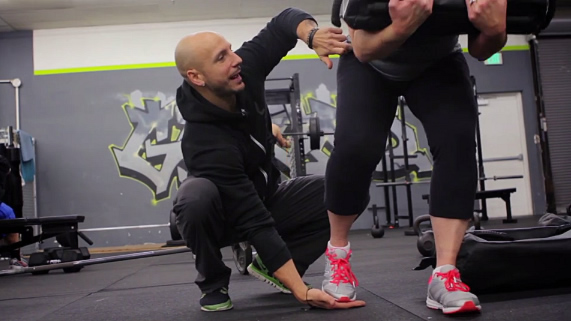
5. Consistency is far more important than intensity.
As a general guideline, less is more. Whether you’re expending way too much energy or cutting far too many calories, you’re better off dialing down the intensity and cranking up the consistency. While your progress will undoubtedly be slower at first, you’ll see much more stable, lasting results.
As backward as it sounds, it’s harder to convince someone of the importance of sustainable training and long-term planning than it is to get them hyped to finish a workout at all costs.
6. Simple is usually better than complex.
You don’t need to use 10 different methods to get in amazing shape. You also shouldn’t try to improve everything at once if you want to see significant results in anything. Narrow your goal, then narrow the way you’re going to achieve it with a few carefully-selected methods and exercises. I promise that you’ll see greater progress.
You can introduce more complexity as you adapt, but there’s no need to complicate your workouts if you’re already making improvements. This goes back to my point on intensity: just because something is difficult, doesn’t mean it’s more effective. Apple has become the behemoth that it is by focusing on scaling back functions, only including features that customers really want and will use. The KISS principle applies to most things in life and training is no exception.
7. You’ll never have it all figured out.
This seems obvious, but it’s important to that you interpret it properly. There is far too much we don’t know about the body and the way it responds to training. What was accepted as fact 10 years may now be proven groundless. Don’t let the fear of never fully understanding the body keep you from continually learning and growing.
Similarly, don’t let your fear of not knowing enough keep you from applying what you’ve learned. Everyone has to start somewhere.
When I got into this industry, I was working with massive football players at the University of Washington. Since then, I’ve trained combat athletes, cheerleaders, housewives, executives, roller derby girls, ultimate frisbee players, and just about anyone else you think of.
Somewhere in between, I had to fill a huge knowledge gap. But I applied what I thought I knew, turned to people who knew more than I did, and still continue to change my approach. Don’t be afraid to do the same.
8. Surround yourself with the right people.
Whether it’s staff, clients, or colleagues, who you spend your time with matters. If your goal is to be a performance coach, don’t spend most of your time training stay-at-home moms. It’s tempting to compromise your vision to accommodate the people that walk through your facility door. Resist that temptation. If you’re not invested in the people you work with, you cease to grow and learn.
It’s just as vital to surround yourself with the right fitness professionals. Find people who challenge what you think you know. Engage in conversations with people you don’t agree with. That’s where learning happens.
Side note: discussing what you disagree on is important for another reason. It may help differentiate you within a crowded industry. I gained my initial following for 8WeeksOut by getting torn apart in an online MMA forum. I shared my ideas on training and was initially blasted for it, but the discussion was read by more than 300,000 people. You have to just put yourself out there and see what happens.
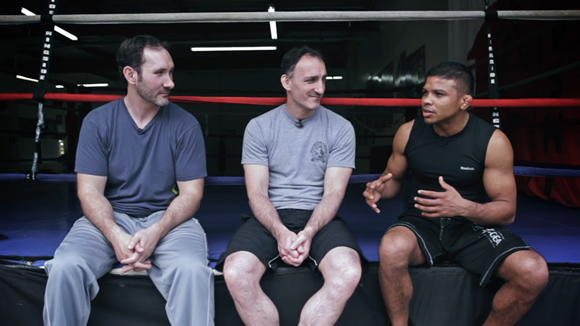
9. Build a team.
The only way to consistently produce results is through a team effort. When it comes to performance, it’s absolutely essential that there is strong communication between the athlete, the coaches that work with him or her, and the manual therapist or athletic training staff. If everyone is on the same page about what the athlete’s weaknesses and how to improve them, all of your efforts carry further.
In this scenario, the coach trains the athlete’s skills; the therapist ensures that the athlete is moving efficiently and without restriction; the athlete focuses on performing. If all parties cooperate to accomplish the same goal and have constant communication between them, success is inevitable.
If you’re working with average clients, form an alliance with a good nutritional coach, a manual therapist, etc. and work closely with them. Building a top notch team around with you to work with and refer to is always going to deliver better results and keep people coming back.
10. There’s no substitute for experience—but experience doesn’t always equate to success.
You can read shelves full of books, pour over research papers, and attend as many seminars as you want, but there is no replacement for training experience. As Buddy Morris, physical preparation coach for the Arizona Cardinals, puts it, “Your job as a coach is to bridge the gap between science and training.”
Take what you’ve read or heard and see how it stands up in the gym or on the field. Context is critical. What may have worked in a 6-week study with controlled diet and sleep schedules may be of little-to-no relevance to a college basketball team. It’s your job to find out.
On the flip side, experience alone does not equate to success. Just because someone has been a coach for 30 years doesn’t mean they’re a good coach. Success and experience go hand-in-hand when you mix in the right combination of strong relationships, an insatiable drive to learn, and the ability to adapt and experiment with new ideas.
11. If your programs don’t change, you’re not learning.
You can’t tell me that you’ve been using the same program for the past 5 years and claim that you’re learning. Information is useless unless you apply it. I’ve seen too many people walk away from strength and conditioning conferences—filled full of excitement and “passion”—only to go home and continue training the same way they had before.
With each new piece of information you learn, ask yourself, “How can I use this? How does this change what I already know?” In my experience, one of the biggest differentiators between exceptional and mediocre coaches is whether or not they ask these questions.
12. There’s never a “perfect” time.
It may seem like you’re too busy to set aside time to read, attend a workshop, or complete an online course. What I’ve learned over the years is that there is never a perfect time. There will always be other, often very important, things vying for your attention.
While you may honestly intend to learn and improve later, odds are that you’ll keep pushing back your timeline. We’ve all seen the outcome of vowing to “start dieting tomorrow,” or “stop smoking next week.” While the intentions may be there, the results rarely are.
To quote Buddy again, “You’ve gotta read on a daily basis. If you limit your knowledge, you limit your abilities. You limit your abilities, you limit the development of your athletes. And that is your job—to develop your athletes.”
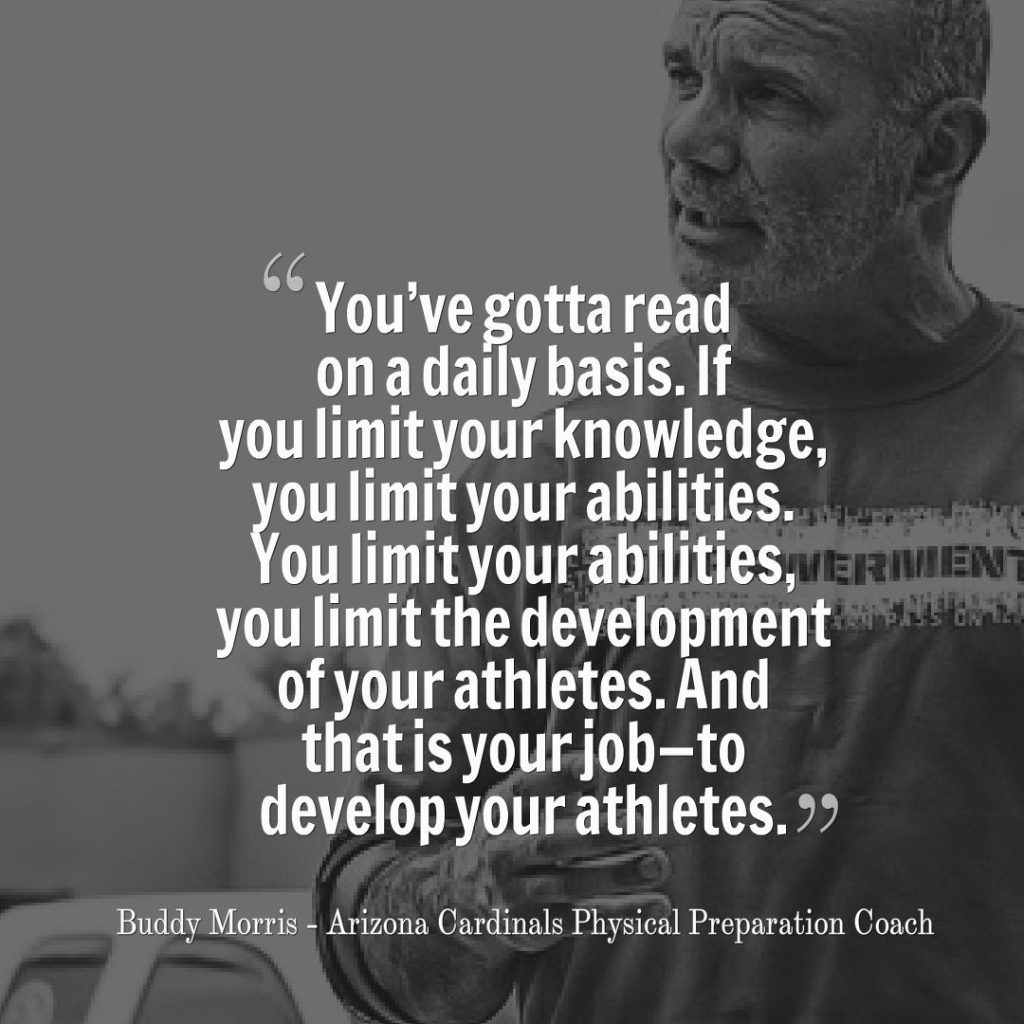
13. Just because everyone else is doing it, doesn’t mean it’s right.
This lesson may sound like something your mom would say before dropping you off at school, but bear with me. Like any other industry, fitness is susceptible to fads. One minute, everyone is doing boot camp-style classes, the next minute they’re swearing by using only HIIT.
In general, you can decipher whether something will do more harm than good by revisiting the points I made earlier: Is it one-size-fits-all? Is it more complicated or difficult than necessary to see positive results? Is the intensity so high that it’s impossible/unhealthy to do it consistently?
Don’t go off of what other people tell you. Monitor and manage training effects using objective, established measures. Maybe a new fad is not all bad. Perhaps you can find an element that you can incorporate into your coaching or business model.
14. There’s a difference between getting and keeping clients.
Getting clients requires a blend of marketing and sales. You have to clearly communicate the value of what you’re offering and know how to close the deal. If you don’t know how to do this, you need to learn. I’ve met many excellent trainers who are horrible business people, and it’s a tragedy.
I’ve also met many marketers who are abysmal trainers. Really, they should be in a different field. Keeping clients is all about your skills as a trainer and coach. Do you establish the right expectations from the start of your relationship? Are you able to deliver the results you promised? Do you adapt your programs daily to your client’s individual needs?
In short: Getting clients = good marketing. Keeping clients = good coaching. You need both.
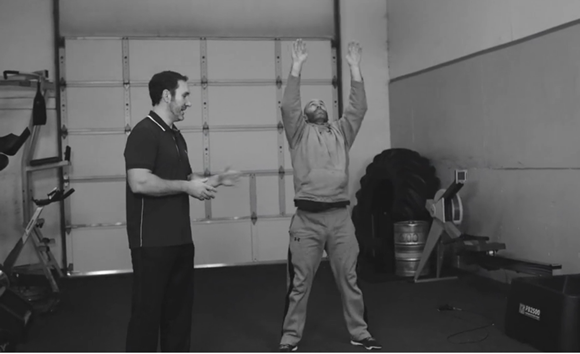
15. A program is more than a piece of paper.
It’s a living, breathing organism. Your training program should adapt to fit the needs of your athletes/clients each day they train with you. Take objective and subjective measures to gauge how recovered they are and to quantify their progress. For more information on how to track progress (conditioning, more specifically), check out this article.
If you see that an individual is accumulating significant fatigue, don’t just continue with the program as planned. Scale down the training load. You should constantly assess, monitor, and manage your athletes and use that information to alter your training programs. This is exactly why one-size-fits-all programs are dangerous.
16. What happens between training sessions is often more important than the training session itself.
If you train someone for 1 hour/day each day of the week, about 97% of their time is completely outside your control. That’s more than enough time to unravel any potential benefit your training might have. Are they getting enough sleep? Are they binge eating or drinking? Are they stressed about school, work, or relationships? There are endless variables that can reduce their ability to fully recover from and positively respond to training.
While there’s a lot of truth to the old saying, “You can lead a horse to water, but you can’t make him drink” there’s still a ton of value in showing him where the water is. Providing education about what lifestyle habits need to be developed and giving your clients a clear path to develop them is far more impactful than assuming they’ll figure it all out on their own. (Hint: they won’t.) If you can think of yourself as a coach that helps people put all the pieces of their lifestyle together, from training, to nutrition and sleep, you’ll have far more success than if all you do is put people through a workout.
17. Technology can be your best friend or your worst enemy.
We are now able to collect more performance and activity data than ever before. Depending on how you use it, this can either pile a lot more work on your plate or it can supplement and inform your tried-and-true practices.
When I use technology, I do it because it meets two criteria: it’s accurate and it makes programming easier.
Unless these two qualifiers are met, I don’t waste my time (and neither should you). It’s far too common that coaches spend hours analyzing data that doesn’t significantly change the way they train or the results they produce. What’s the point?
When those two criteria are met, that’s where the magic happens. You can use technology, such as HRV or heart rate monitoring to inform your coaching decisions: Should you scale intensity up or down? Is performance improving, plateauing, or declining? When applied correctly, technology allows you to train your clients/athletes smarter and measure training effects sooner.
